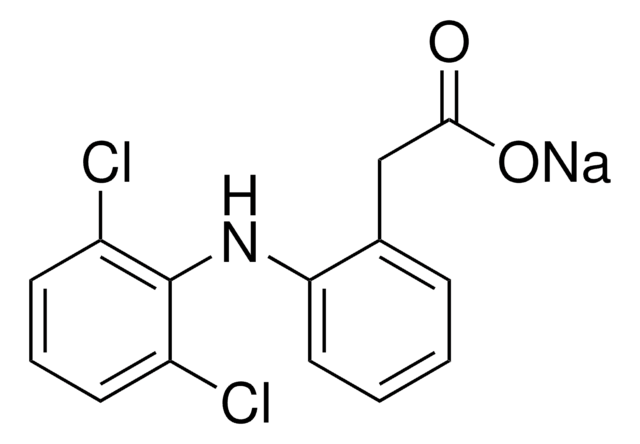221988
Ammonium thiocyanate
ACS reagent, ≥97.5%
Synonyme(s) :
Ammonium rhodanide
About This Item
Produits recommandés
Qualité
ACS reagent
Essai
≥97.5%
Forme
crystals
Impuretés
≤0.004 meq/g I2 consumers
≤0.005% insolubles
Résidus de calcination
≤0.025%
pH
4.5-6.0 (25 °C, 5% in H2O)
Pf
152-154 °C (lit.)
Traces d'anions
chloride (Cl-): ≤0.005%
sulfate (SO42-): ≤0.005%
Traces de cations
Fe: ≤3 ppm
heavy metals (as Pb): ≤5 ppm
Chaîne SMILES
N.SC#N
InChI
1S/CHNS.H3N/c2-1-3;/h3H;1H3
Clé InChI
SOIFLUNRINLCBN-UHFFFAOYSA-N
Vous recherchez des produits similaires ? Visite Guide de comparaison des produits
Description générale
Application
- Substituted 2-aminothiazole derivatives by reacting with -halo ketone carbonyls in the presence of N-methylimidazole.5
- Thiiranes from corresponding oxiranes in the presence of lithium tetrafluoroborate.
Mention d'avertissement
Danger
Mentions de danger
Classification des risques
Acute Tox. 4 Dermal - Acute Tox. 4 Inhalation - Acute Tox. 4 Oral - Aquatic Chronic 3 - Eye Dam. 1
Risques supp
Code de la classe de stockage
13 - Non Combustible Solids
Classe de danger pour l'eau (WGK)
WGK 1
Point d'éclair (°F)
Not applicable
Point d'éclair (°C)
Not applicable
Faites votre choix parmi les versions les plus récentes :
Déjà en possession de ce produit ?
Retrouvez la documentation relative aux produits que vous avez récemment achetés dans la Bibliothèque de documents.
Les clients ont également consulté
Notre équipe de scientifiques dispose d'une expérience dans tous les secteurs de la recherche, notamment en sciences de la vie, science des matériaux, synthèse chimique, chromatographie, analyse et dans de nombreux autres domaines..
Contacter notre Service technique











